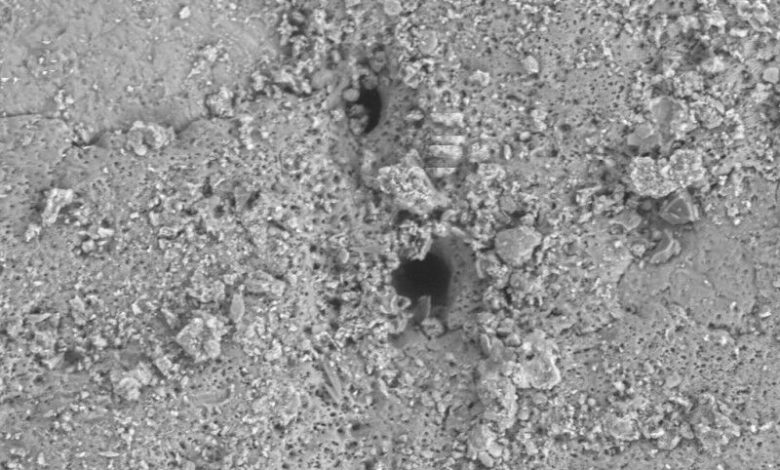When Did the Hen Go the Highway? Pristine Proof from Central Asia

Pristine analysis unearths that chickens have been broadly raised throughout southern Central Asia from 400 BCE thru medieval classes and most likely dispersed alongside the traditional Silk Highway
In a unutilized learn about printed via Nature Communications, a global group of students provide the earliest cloudless archaeological and biomolecular proof for the elevating of chickens for egg manufacturing, according to subject material from 12 archaeological websites spanning one and a part millennia. The analysis signifies that the home rooster, now a staple in diets world wide, isn’t as historical as prior to now idea.
Chickens are one of the crucial economically remarkable animals on this planet these days. Then again, the tale in their origins and dispersal around the historical global continues to be poorly understood. In truth, unutilized archaeological tactics have just lately resulted in the popularity that many unearths of bones prior to now idea to constitute early chickens if truth be told belonged to wild birds. Now, in a unutilized newsletter, a global group of archaeologists, historians, and biomolecular scientists provide the earliest cloudless proof for the elevating of chickens for egg manufacturing, and argue that the lack of seasonal egg laying used to be the primary driving force for the dispersal of home chickens throughout Eurasia and northeast Africa.
The use of eggshell fragments gathered from 12 archaeological websites spanning kind of 1500 years, the researchers display that chickens have been broadly raised in Central Asia from roughly 400 BCE to 1000 CE and have been most likely dispersed alongside the traditional Silk Highway. The plenty of eggshells additional means that the birds have been laying out of season. It used to be this feature of prolific egg laying, the researchers argue, that made the home rooster so sexy to historical peoples.
To achieve those conclusions, the group gathered tens of hundreds of eggshell fragments from websites positioned alongside the primary Central Asian hall of the Silk Highway. They upcoming old a mode of biomolecular research referred to as ZooMS to spot the supply of the eggs. Just like genetic research, ZooMS can build species identifications from animal remainder corresponding to bone, pores and skin and shell, nevertheless it is dependent upon protein alerts in lieu than DNA. This makes it a sooner and cheaper possibility than genetic research.
“This study showcases the potential of ZooMS to shed light on human-animal interactions in the past,” says Dr. Carli Peters, researcher on the Max Planck Institute of Geoanthropology and primary creator of the unutilized paper.
The id of those shell fragments as chickens, and their plenty right through the sediment layers at each and every web page, led the researchers to an remarkable conclusion: the birds will have to had been laying extra incessantly than their wild ancestor, the purple forest bird, which nests as soon as consistent with generation and generally lays six eggs consistent with grasp.

“This is the earliest evidence for the loss of seasonal egg laying yet identified in the archaeological record,” says Dr. Robert Spengler, chief of the Domestication and Anthropogenic Evolution analysis team and primary investigator at the learn about. “This is an important clue for better understanding the mutualistic relationships between humans and animals that resulted in domestication.”
Taken in combination, the unutilized learn about suggests a solution to the age-old riddle of the rooster and the egg. In Central Asia, proof means that the facility to put a large number of eggs is what made the rooster the rooster we all know these days – a world species of huge financial use. The authors hope that this learn about will show the possibility of unutilized, cost-effective modes and interdisciplinary collaboration to deal with long-standing questions concerning the year.
Carli Peters; Kristine Ok. Richter; Shevan Wilkin; Sören Stark; Basira Mir-Makhamad; Ricardo Fernandes; Farhod Maksudov; Mirzaakhmedov Sirojidin; Rahmonov Husniddin; Stefanie Schirmer; Kseniia Ashastina; Alisher Begmatov; Michael Frachetti; Sharof Kurbanov; Michael Shenkar; Taylor Hermes; Fiona Kidd; Andrey Omelchenko; Barbara Huber; Nicole Boivin; Shujing Wang; Pavel Lurje; Madelynn von Baeyer; Rita Dal Martello; and Robert N. Spengler III
When Did the Hen Go the Highway: Archaeological and molecular proof for historical chickens in Central Asia




